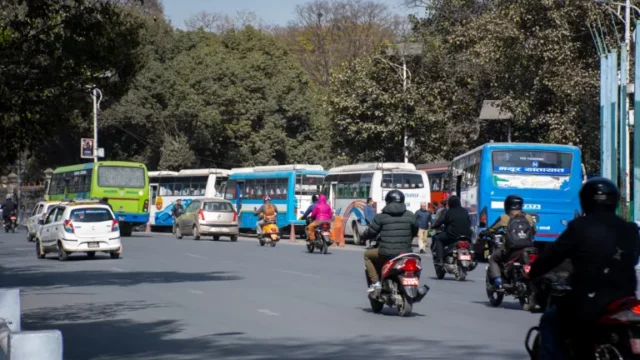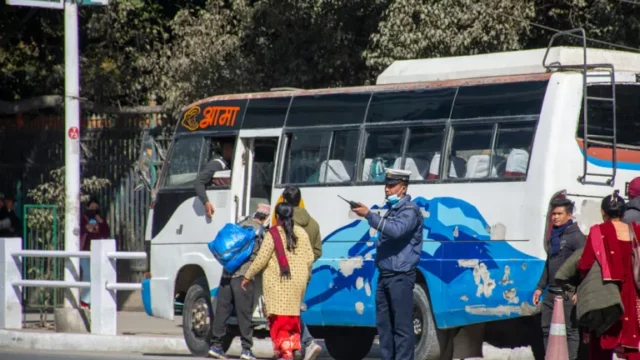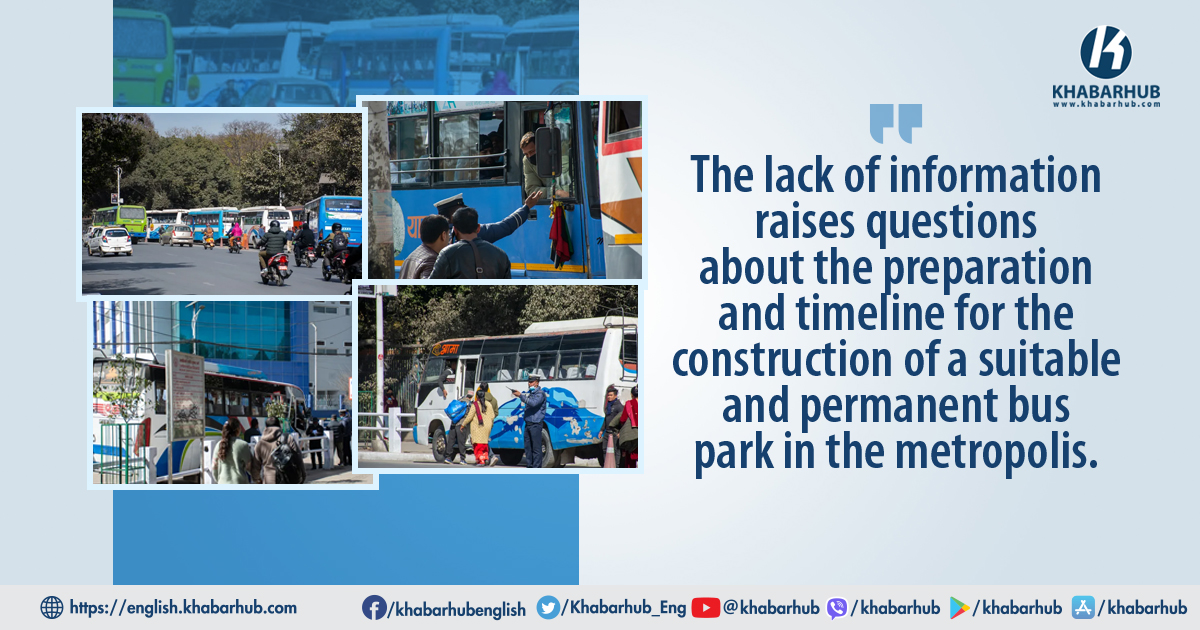KATHMANDU: It has been 14 years since Bikash Pariyar began his career as a driver, navigating the Panauti-Kathmandu route.
He shares the challenges of operating in a bustling city like Kathmandu, where the absence of a proper bus park adds to their woes.
Pariyar laments the difficulty of picking up and dropping off passengers while the vehicle is in motion.
A significant issue, according to Pariyar, is the lack of restroom facilities.
He explains, “There is no place to halt for a minute; if we stop, the police issue a ticket.”
Pariyar adds, “With daily earnings around 1200, traffic police inflict further financial strain by levying a ticket of 1500.”
The absence of designated areas for passenger pick-ups and drop-offs forces drivers to make impromptu stops, and Pariyar questions how they can sustain their livelihood when constantly penalized by the police.
Ratnapark, near Bir Hospital in Kathmandu, is designated as a bus park, but Pariyar criticizes its small size.
“You can park your vehicle here for a maximum of two to five minutes,” he notes, emphasizing the challenge for passengers to embark and disembark properly without risking a ticket.
Pariyar alleges that managing traffic is overshadowed by the police’s focus on issuing tickets, turning the bus park into a center for revenue collection.
Deepak Raj, with 22 years of driving experience on the Kavre-Kathmandu route, echoes Pariyar’s sentiments.

Driving is a highly sought-after profession in Nepal, yet drivers feel overlooked by the government.
He questions the Kathmandu Metropolitan Corporation’s (KMC) failure to provide even a single bus park, stating, “Is the bus park not a necessity for transportation professionals? Shouldn’t this concern be addressed by the metropolis?”
He describes the dire situation where the road itself becomes a makeshift bus park, with traffic police eagerly anticipating opportunities to issue tickets.
He emphasizes that being a driver involves more than just picking up and dropping off passengers; drivers also need breaks for tea and lunch.
The struggle to find a place to stop, eat, or use the restroom leaves drivers like him with no choice but to keep their vehicles running without breaks.
Referring to the temporary bus park at Ratna Park as the “Sadak Bus Park,” he criticizes its inadequate size, accommodating only a fraction of the vehicles that have obtained permits.
Despite paying significant fees for permits, drivers find themselves unable to stop for even a couple of minutes at the designated bus park, exacerbating their challenges.
According to Laxman Paudel, a driver on the Dhulikhel to Kathmandu route, the temporary bus park at Ratnapark appears to serve only as a venue for police ticketing.
Expressing frustration, he highlights the challenges faced when allowing women, children, and the elderly sufficient time to disembark, only to have the police issue tickets despite such scenes.
Paudel arrives at the temporary bus park at 8 pm, left with an empty vehicle and no facilities, stressing the prevalence of pickpockets and sex workers in the area.
He notes the need to safeguard their hard-earned money and the constant presence of sex workers, creating an environment that demands constant vigilance.
Similarly, Som Bahadur Chhetri from Banepa, who has been coming to Kathmandu for six months, raises concerns about the lack of a bus park.
He reminisces about boarding from the old bus park and anticipates changes to the current temporary bus park.
Chhetri explains that villagers face difficulties finding boarding and alighting points in the absence of a designated bus park.
Kopila Sunar, seeking transport to Banepa with her 4-year-old daughter, navigates through Ratnapark.

She expresses reluctance to answer questions, emphasizing the challenges of transportation in the absence of proper facilities.
Sunar describes her journey as a constant struggle, comparing it to a war. She reflects on the desire for a taxi if she had the means.
Despite being the largest metropolitan city in the country, Kathmandu lacks a single designated bus park.
The absence of such facilities poses challenges for both drivers and passengers.
With a population of 4 million in the Kathmandu Valley and 10 million vehicle owners, the policy rules seem to favor only a quarter of the population, leaving the majority grappling with transportation issues on a daily basis.
The fate of the bus park in the metropolis remains uncertain as the Kathmandu Metropolitan City remains silent on the matter, providing no clear timeline or information on the proposed developments.
In the year 2071 BS, permission was granted by the KMC to repurpose the old bus park into a view tower.
An agreement was established between the Municipal Corporation and Jaleshwar Swachhand Wikoi Builders Pvt Ltd to construct a 12-floor tower within five years.
However, despite nine years passing since the agreement, the construction remains incomplete.
The KMC added to the chaos by initiating ‘pick and drop’ while constructing a two-storey open platform bus park from 2078.
This move aimed to separate short distance vehicles from medium and long-distance ones, with the latter being directed to the new bus park.
Consequently, the public forum was closed, and the temporary bus park on the street was designated for a maximum stop of two minutes per vehicle.
The bus park’s eventual shift to the View Tower remains uncertain, and the KMC has not provided any confirmation on when this relocation might occur.
The lack of information raises questions about the preparation and timeline for the construction of a suitable and permanent bus park in the metropolis.









Comment